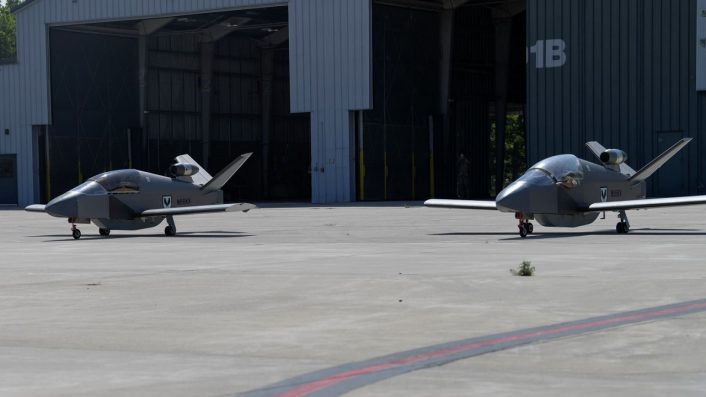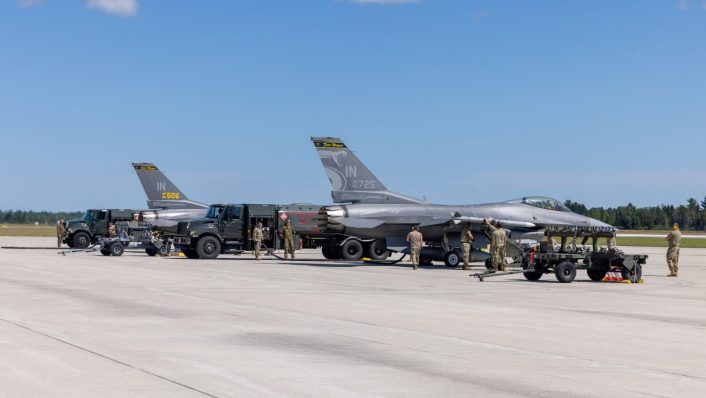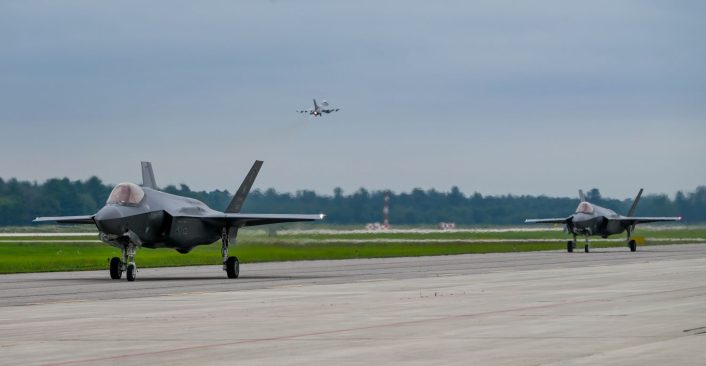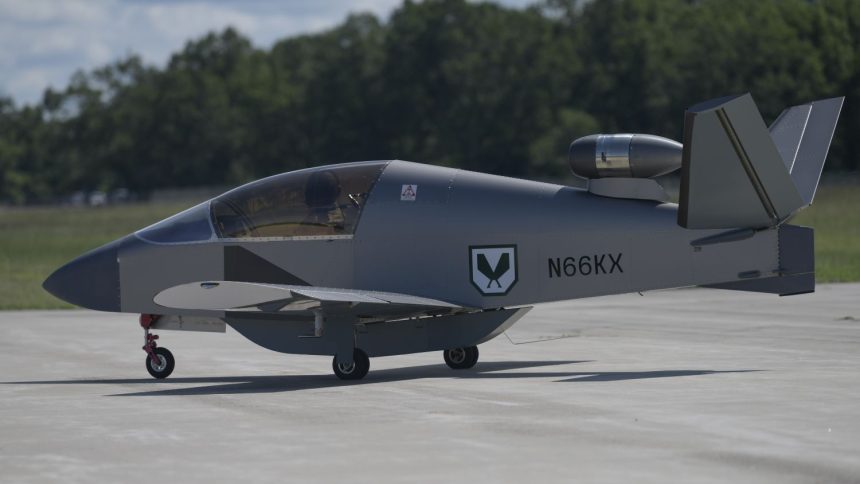The U.S. Air Force continues to make its exercises more and more realistic while preparing for a possible near-peer fight in the Pacific, training to defend against cruise missiles and UAVs simulated by microjets.
In the skies over Northern Michigan, the U.S. Air Force is simulating interceptions of cruise missiles and unmanned aerial vehicles (UAVs) with tiny, homebuilt microjets from Sonex Aircraft. Real world events have shown the increasingly frequent use of cruise missiles and UAVs on the battlefield, demonstrating the importance of being able to counter them effectively.
The pair of microjets, civilian registration numbers N55KX and N66KX, are operating out of the Alpena Combat Readiness Training Center (CRTC), Michigan, and flying alongside exercise participants. The operator, KestrelX, had been awarded a contract in 2022 for “UAV and cruise missile threat replication aircraft” valued at $725,053 USD.
The JSX-2s involved in the exercise are also seen to be carrying a pod of some sort on their bellies that isn’t included in the standard model of the type. With a $725,000 contract awarded to the company the pods could really be carrying anything. On their website, SubSonex has the price of the jet listed at just $136,654, leaving plenty of contract money for upgrades.
The JSX-2 is extremely light with an empty weight of just 500 pounds (227 kg), a length of 16’ 6” (5 meters), and a wingspan of 18 feet (5.5 meters). The jet has a maximum speed of 287 miles per hour (462 km/h) with its PBJ TJ100 engine. Sonex Aircraft and Navmar Applied Sciences Corporation (NASC) have also rolled out a twin-engine, unmanned version of the JTX-2 known as the Tracer.

Exercise Northern Strike 24
Exercise Northern Strike 24 is described by the Air National Guard as the “premier reserve component training event designed to build readiness with joint and partner forces in all domains of warfare”. More than 6,300 personnel from 32 states as well as “several international participants” are involved in the action, hosted in the National All-Domain Warfighting Center (NADWC).
The exercise also features the Joint Personnel Recovery Agency as it tests new combat search, rescue, and recovery systems. Other units participating in the exercise are the DC ANG’s 113th Wing, Ohio ANG’s 180th Fighter Wing, Indiana ANG’s 122nd Fighter Wing, and a whole bunch of KC-135 Stratotankers from various Air National Guard units.
A press release on the exercise also says that the exercise partly focused on “homeland security and defense against unmanned aerial systems” and included maritime defense and strike missions in Lake Michigan.
The National All-Domain Warfighting Center, according to the Michigan National Guard, covers nearly 148,000 acres at the Camp Grayling Maneuver Training Center and 17,000 square miles of special use airspace attached to the Alpena CRTC. The center provides training opportunities across all five warfighting domains – air, land, maritime, space, and cyber.

Exercise Northern Lightning 24
At the same time as Northern Strike, the Wisconsin ANG is hosting Northern Lightning 24 at the nearby Volk Field CRTC. In the press release for Northern Lightning, the Wisconsin National Guard describes the exercise as “a tactical-level, joint training exercise replicating today’s air battle space with current and future weapons platforms.” The exercise includes around 1,100 personnel from across the Air Force and Marine Corps and is running in parallel with Northern Strike. “Lightning” also includes F-35As, F-35Cs, and various F-16C units.
“Northern Lightning 24 is focused on advanced combat and our ability to execute in a contested environment with an agile footprint that replicates operational expectations in the Pacific theater,” Lt. Col. Michael Cady, exercise director, said. “The desired end state for the exercise is that our Air National Guard and active-duty Airmen, as well as joint partners, are at their best capability level to address the threat with combat power if called to do so in the future.”
The service also added that the exercise emphasizes joint asset integration and provides realist combat training, ensuring the ability to meet war fighting needs now and in the future. Worth noting, cruise missiles aren’t necessarily a sign of an equal military power – the Houthis of Yemen have been using them against U.S. and coalition allies as well as civilian shipping operations in the Red Sea as of late.
These two exercises come at a time when the U.S. military is preparing for a potential “near peer” fight in the Pacific. One can imagine the Department of Defense will keep this tempo or higher up as 2025 gets closer and closer.










